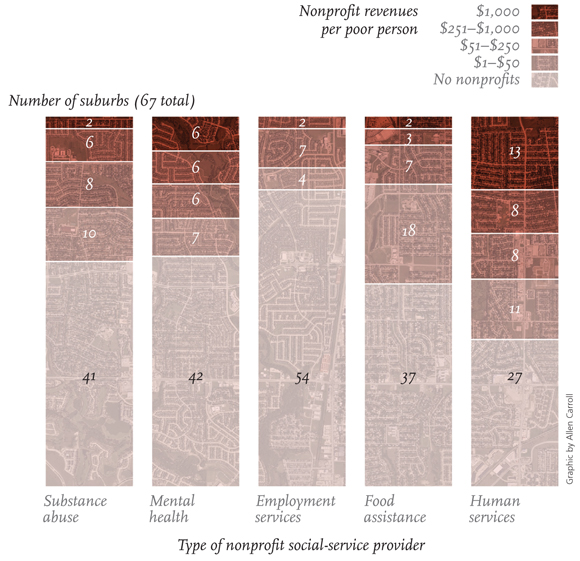Threadbare safety net
By Lydialyle Gibson
Graphic by Allen Carroll
Between 2000 and 2008, several counties outside Chicago saw the number of poor residents rise by more than 40 percent. The experience is not rare; suburban poverty has climbed over the past decade as people have left the inner city for better opportunities—and more recently as the recession has hit suburbanites. In those communities, however, residents often discover a safety net that is ill-equipped to handle their needs.
In a Brookings Institute study of suburbs around Chicago, Washington, and Los Angeles, Scott Allard, a School of Social Service Administration researcher, and SSA grad student Benjamin Roth found that nonprofits are spread thin, both monetarily and geographically. In many cases there simply are no agencies to fill key needs. The graph at right charts the situation in 67 of the largest suburbs Allard and Roth surveyed. For instance, 54 of those suburbs lack any nonprofits offering employment services; 37 have no food-assistance providers, and among those that do, resources are modest: agencies in 18 suburbs took in only $1–$50 per poor person.

Return to top
